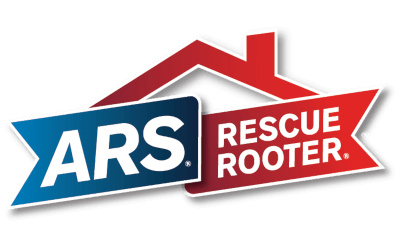What is Causing My Toilet to Overflow?
.jpg)
We’ve all been here before, haven’t we? You flush the toilet expecting the bowl to empty as it has countless times before. This time, the water doesn’t empty all of the way. It keeps rising and rising. Suddenly, your toilet is overflowing and now you have a catastrophe all over your bathroom floor.
Plumbing issues can be a real inconvenience for any homeowner. But when you’re having to deal with a toilet overflowing, it can be a nightmare. Our toilets are the most commonly used appliances we have in our homes. They don’t tend to act up often, but when they do, it’s important to act quickly to prevent serious water damage to your home and drain pipe damage.
What Causes a Toilet to Overflow?
If your toilet is overflowing, odds are pretty high that you have a drain clog. A blockage typically will cause a sudden overflow when the toilet is flushed. You can sometimes identify a blockage before flowing by paying attention to have fast the water reenters your toilet bowl after flushing. If your toilet is prone to clogging, it is best to keep an eye on it after each flush and listen for any gurgling sounds.
Typical causes for a toilet clog include:
-
Flushing too much waste and/or toilet paper at one time.
-
Using the toilet to dispose of non-flushable bathroom trash, such as pads, tampons, cotton balls, paper, dental floss, or diapers.
-
Flushing kitchen waste, including cooking grease, fruit and vegetable peels, meat trimmings, etc.
-
Disposing of pet waste, including clumps of kitty litter and dog waste bags. Even products advertised as flushable may cause problems under the right conditions.
-
Weak or partial flushing that, over time, allows a clog to form and grow. Older low-flow toilets and toilets with tank float or flapper problems may be the culprit in this case.
-
Leaving small children unattended in the bathroom. There's no telling what they'll find fun to flush!
Keep in mind that the clog may not be in just your toilet’s line; it could be in the main sewer line for your home or apartment building. Check the other toilets on the line to see if that's a possibility.
How Do I Quickly Stop an Overflowing Toilet?
No matter what led to this situation, there are some fast-acting steps you should take in order to take control of the situation.
Toilet Shutoff Valve
First, shut off the water supply to the toilet. Look for a silver football-shaped knob coming out of the wall at the back of the toilet and turn it counterclockwise. This will stop any additional water from flowing into the toilet and making the situation any worse. Homeowners tend to freeze up when they see water running out of their toilet and onto their floor. All you need to remember is by shutting off the water supply, water will stop flowing into the toilet and all over your bathroom rug.
Toilet Tank Flapper
Sometimes, the shutoff valves get stuck since they are left open for years and infrequently touched. If your valve is stuck, or for whatever you cannot reach it, the next solution lies within the tank of the toilet. Lift the lid off the top of your toilet and look for your flapper. It’s a rubber disc that covers the hole at the bottom of the tank. If the flapper is open, even just a little bit, this can cause water to keep running into the bowl. Simply push the flapper down with your fingers until the water stops running. It’s likely you’ll need to replace the flapper, but more importantly, this isn’t a permanent fix. You will still need to unclog the toilet.
Toilet Tank Float Ball
If you still have water overflowing at this point, you’ll need to find the float ball inside the take. The float ball looks like a big balloon attached to a rod inside the toilet tank. This ball, when raised by the water level in the take, tells the toilet to stop filling with water after you flush. To trick your toilet into thinking the tank has filled with water, simply lift the float ball as high as it will go. Find something to prop the rod and float ball up with while you clean up your bathroom floor and work on unclogging your drain.
Do I Need to Call a Plumber When My Toilet Overflows?
If you can self-diagnose an issue with your tank flapper or float ball, these typically can be fixed yourself by going to your local hardware store and buying replacement parts. If you believe there is a blockage in your drain pipe, try using a plunger or drain snake to clear the drain yourself.
There may be other reasons causing your toilet to overflow that can be much more serious. These are situations better trusted to a professional plumber that can remove the worst clogs and also check for less common clog causes, like tree roots growing into your sewer line, or a broken or collapsed pipe. If clogging is a frequent problem in your home, we may be able to recommend a solution—from new toilet installation to video sewer inspection and pipe repair.
If you believe your toilet or drains needs immediate repair, find your nearest ARS/Rescue Rooter location to book your appointment online right away!


